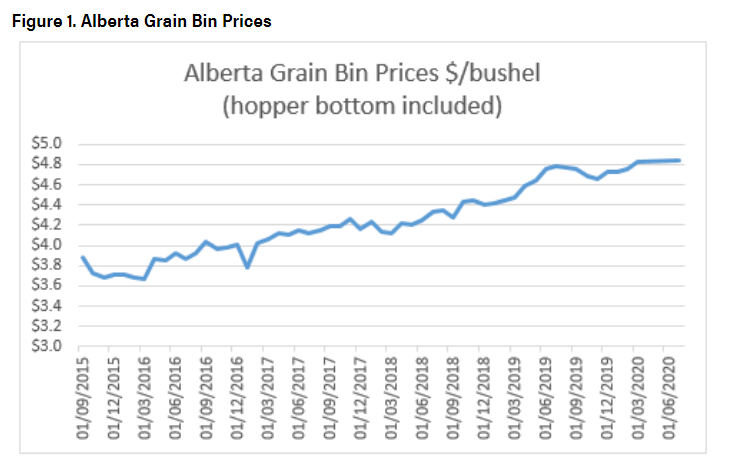What to consider when storing grain for the short and long term.
‘Farmers in Alberta along with growers in other prairie provinces have more grain storage than most of their worldwide competitors,’ says Ryan Furtas, market analyst with Alberta Agriculture and Forestry. ‘However, having storage capacity can be a marketing advantage, but capturing a higher price by storing grain is not a guarantee.’
He notes that generally in years with normal production, prices are seasonally lowest at harvest time due to a large influx of supply from newly harvested crop that puts pressure on the grain handling system.
‘Customers who utilize grain, oilseed and pulse crops tend to require a consistent supply over the entire year. Storing grain short-term - 3 to 4 months - or longer term - 10 to 11 months - following harvest can improve producer returns and allow farmers to provide product at times when deliveries are otherwise slow.’
Canola and wheat are 2 Alberta crops that comprise the majority of acreage, and both commodities have futures markets for price discovery. Some smaller, yet economically important crops that have no futures markets include durum, barley, flax and field peas. These secondary crops can be subject to more extreme price swings and can sometimes remain in storage for more than a year as producers try to wait out market downturns.
The actual cost of storage is more than just the purchase price for the grain bin. Set up costs can be significant if it includes a concrete floor, temperature monitoring systems and aeration. Annual depreciation needs to be considered along with repairs and maintenance, and that can amount to an annual cost of upwards of 25 cents a bushel.
Furtas adds that grain bin prices have been steadily climbing over the last 5 years.
‘Figure 1 below shows that the purchase price of a 5,000 bushel bin has increased from $3.80 per bushel in 2015 to $4.80 per bushel in 2020. Steel - both corrugated and smooth walled - grain bin prices are driven by both market demand and steel prices.’

Producers in Alberta have been investing in permanent on farm storage. According to Statistics Canada’s July 2020 survey, Alberta producers have approximately 27.5 million tonnes of permanent on-farm grain storage capacity, compared to 25 million tonnes just 5 years ago.
‘The Statistic Canada report also states that approximately 9% of reported grain stocks using temporary on farm storage such as grain bags, see Figure 2 below,’ he explains. ‘This shows that producers are using both temporary and permanent storage options on their farm. However, the overwhelming preference is for permanent storage.’
‘The decision to use either permanent or temporary storage is unique, and it boils down to each individual’s situation,’ Furtas adds. ‘Generally, permanent storage is preferred to maintain grain quality and for the ease of use.’
Source : alberta.ca